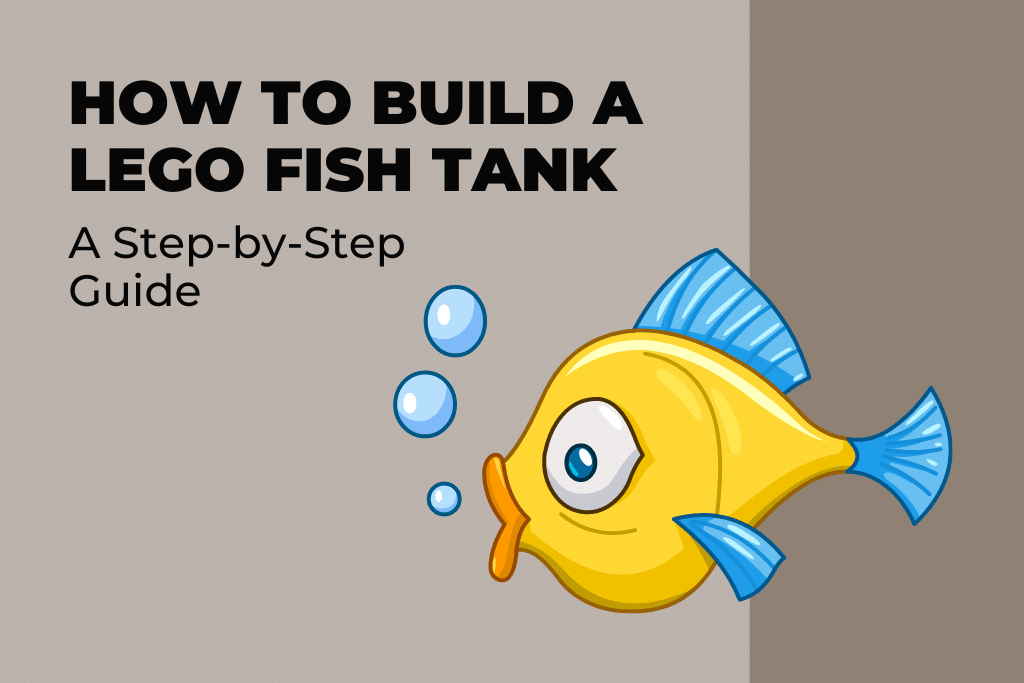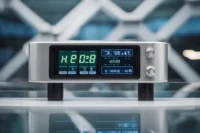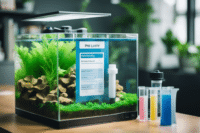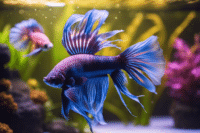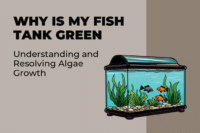Building a fish tank out of LEGO can be both a fun and engaging DIY project that captures the beauty of underwater life in a playful, blocky form. Whether you’re a LEGO enthusiast looking to combine your love for aquatic scenes with your building skills, or a parent aiming to involve children in a creative learning activity, creating a LEGO fish tank offers ample opportunities for customization and imagination. By assembling bricks into a transparent tank, you can craft a captivating display featuring colorful fish, intricate coral patterns, and dynamic underwater landscapes.
It begins with selecting the right LEGO sets or pieces that will form the foundation of your build. The LEGO Creator series, for instance, offers a specific set designed for this purpose – the LEGO 31122 Fish Tank. This set includes a variety of colorful and specially-shaped bricks to simulate water, plant life, and fish. However, more experienced builders can take it a step further by sourcing pieces from multiple sets or their collection, planning out the dimensions, and even incorporating moving parts or lighting to bring the scene to life.
Key Takeaways
- Constructing a LEGO fish tank is a customizable project suitable for LEGO fans of all ages.
- Important steps include planning dimensions, choosing the right pieces, and detailing the aquatic scene.
- Finalizing a LEGO fish tank involves creativity with potential additions like lighting or movement features.
Planning Your Lego Fish Tank
When embarking on the project of building a Lego fish tank, it is crucial to make informed decisions about the set you choose and to understand the specific features of the 31122 Fish Tank set, if you opt to use it.
Choosing the Right Set
One should assess their collection to determine whether they have the necessary pieces for constructing a fish tank. Lego offers a variety of sets that could be suitable. However, if one’s collection lacks aquatic-themed elements, they may consider acquiring a set specifically designed for this purpose. The Creator 3-in-1 sets often provide a diverse range of pieces that are ideal for such custom projects.
Understanding the 31122 Fish Tank
The Lego 31122 Fish Tank from the Creator 3-in-1 line is a prime example of a set that can be used to build a decorative fish tank model. It features a colorful array of bricks and the flexibility for multiple builds, demonstrating the versatility of Creator sets. Understanding how to assemble this set forms a solid foundation for designing customized versions or enhancing one’s existing Lego fish tank.
Building the Foundation
Constructing a sturdy foundation is essential for the integrity of a Lego fish tank. This section will guide you through the steps of assembling the base, selecting quality bricks, and staging the appropriate dimensions for your build.
Assembling the Base
The base is the bedrock of your Lego fish tank, and attention to its construction cannot be overstated. One begins by laying out a large, flat Lego plate upon which the walls will be erected. It’s imperative that this plate is adequately sized to accommodate the planned dimensions of the tank and that it rests on a flat surface to prevent any warping or instability.
Selecting Quality Bricks
Quality bricks form the heart of a reliable Lego construct; one must only employ bricks that are free from damage and have a firm clutch power. For the fish tank’s walls, the builder should opt for standard rectangular Lego bricks, as they provide a balance between structural integrity and ease of manipulation. Transparent bricks are also a good choice for creating viewing windows in your tank.
Staging the Dimensions
Proper staging of the tank’s dimensions is critical to achieving both aesthetic appeal and structural soundness. The tank’s length, width, and height should be pre-planned, ensuring that the final build is proportionate. A good practice is to lay out a first layer of bricks outlining the tank’s footprint. This layer serves as a blueprint for subsequent layers and helps visualize the intended size of the completed structure.
Designing the Aquatic Scene
Creating a captivating Lego fish tank involves meticulously arranging corals, adding a variety of marine life, and incorporating treasure chests and accessories to bring the underwater landscape to life.
Arranging the Coral
One begins the aquatic design by placing Lego corals in various colors and shapes to form a vibrant and textured seascape. They should set up the coral pieces sporadically across the base of the tank to mimic natural coral reefs. Using a mixture of bright colors like pink, green, and yellow will add a realistic touch to the coral arrangement.
Adding Fish and Marine Life
After setting up the coral, they can introduce Lego fish and other marine creatures to their tank. Iconic species such as the orange clown fish or the regal blue tang can be nestled among the coral structures. The Lego fish should be strategically placed to suggest movement within the scene. Additionally, adding a few unusual inhabitants like the yellow tang or an orange crab hiding in the crevices further enhances the oceanic ambiance.
Incorporating Treasure Chest and Accessories
Lastly, one enhances the scene with a Lego treasure chest to suggest an underwater adventure. Placing the chest partially hidden under coral pieces with a few gold Lego coins spilling out creates an exciting focal point. Accessories such as a seagull, perched atop a rock, or a parrot adjacent to the tank can extend the theme beyond the water’s surface. They shouldn’t overcrowd the scene, ensuring each element is visible and contributes to the overall aesthetic.
Constructing Additional Features
When building a LEGO fish tank, enthusiasts often expand their creation by incorporating additional features. These can range from dynamic elements like a mini submarine to imaginative alternate models that transform the aquatic scene into a new narrative.
Crafting the Mini Submarine
To build a mini submarine for the LEGO fish tank, one needs to pay attention to the compact design and articulation. Start with a small cylindrical body using round bricks, ensuring that a canopy can be added on top for visibility. Tiny hinged plates work well for fins and tail, allowing the submarine to “glide” through the imaginary deep sea.
Building Alternate Models
Alternate builds can breathe new life into the standard fish tank set-up. For a medieval castle, use angular bricks to mimic the stone walls and grey slabs to simulate the rugged textures. Incorporating arches for doorways and clear bricks for stained glass windows will complete the transformation, turning the fish tank into a castle’s moat. A careful arrangement of bricks can mimic a drawbridge or tower, adding to the effect.
Finishing Touches and Display
Creating a captivating Lego fish tank involves not just the assembly of bricks but also the artful addition of final details and a thoughtful presentation of the display piece. These elements are what turn a simple build into an eye-catching model that draws attention and admiration.
Adding Final Details
One can enhance the visual appeal of their Lego fish tank by incorporating an inventory of colorful details. These might include miniature Lego fish, aquatic plants, or a treasure chest. Using brackets and plates to add depth and texture simulates the complexity of marine life. Strategically placing black tiles can give the impression of shadows and gaps, further bringing the display model to life.
- Selected Details:
- Aquatic creatures: Adding diverse brick-built fish or sea creatures.
- Vegetation: Using a variety of green pieces to mimic plants.
- Rocks/Caves: Creating structures with gray and brown bricks for realism.
Setting the Display Piece
When displaying the Lego fish tank, it’s important to consider lighting and background. Displaying on a shelf with ample natural light can highlight the vibrant colors of the Lego bricks. Placing the fish tank against a backdrop that contrasts its design can make the colors pop even more. One may also build a stand or base with complementary colors to elevate the model, both figuratively and literally.
- Display Suggestions:
- Spotlighting: Use directed lights to accentuate key features.
- Background: Choose a background that won’t distract from the tank’s vibrancy.
- Base: Construct a sturdy base that aligns with the tank’s color scheme.
After Build Review and Alternatives
Once the LEGO fish tank is constructed, it’s essential to assess the quality and value of the finished product while considering alternative designs that can be made from the same set.
Evaluating the Finished Product
When one completes the build of the LEGO Group’s fish tank, the first step is to conduct a review of the assembled item. Observers should assess quality by examining the sturdiness of the construction and the precision with which the pieces fit together. As a playset, it’s important to determine the ease of interaction and the level of engagement the set provides. Additionally, the value of the set can be weighed against the enjoyment and aesthetic appeal it brings compared to its price.
Exploring Rebrickable MOCs
Fans of LEGO have the opportunity to explore further designs by visiting Rebrickable, a site known for its extensive database of My Own Creation (MOC) instructions. Alternative builds, often a portrait or other scenarios, allow one to repurpose the same bricks into a completely new structure, extending the value and utility of the initial purchase. Users may find designs that transform the fish tank into other decorative or playable forms, all created and shared by the LEGO community.
